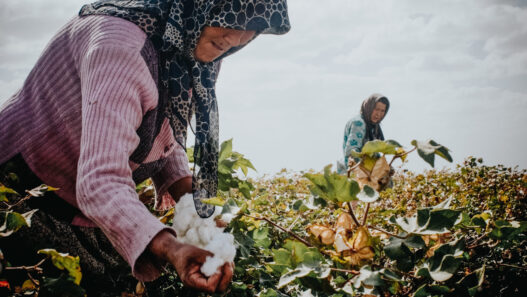Without photographs, fashion would be nothing. Photographers play a key role in the fashion industry and that is why we need to make them aware of their rights so that nobody takes advantage of their work. In the fashion industry, every single course of action is bound by agreements and contracts, be it hiring a model, photographer, designer, etc. With the pandemic around the corner, everything is digitalized. Social media being the perfect platform for reach for photographers can be a boon and bane at the same time. A lot of upcoming fashion photographers struggle with publishing their photos because of their work being stolen and shared by others without giving them any credits. With the help of various editing tools, watermarks can be removed thereby stealing their credit.
A photographer may register a copyright in a photograph, however, this is a recommendation rather than a requirement. Copyright protection begins the moment the work is created. The expression of a concept is copyrightable, but not the idea, according to copyright law. Normally, social media platforms have their own copyright rules. For example, Instagram states its Copyright rules which tells its users how to protect their own copyrighted works and avoid infringing the copyrights of other people when posting on Instagram, as well as how Instagram addresses reports of copyright infringements. But we must note that laws in different countries may vary. If the issue is still not resolved using its Help Centre, then it is better to move legally.
Countries pass laws to safeguard intellectual property for two primary reasons: first, to give statutory voice to the creator’s moral and economic rights, and second, to foster creativity in order to encourage fair trade and accelerate the creator’s and country’s economic and social growth. The laws controlling Copyright protect intellectual property rights on photos. Legislators have taken strenuous attempts to protect photographers’ rights by categorizing images in the “Artistic Category,” which includes photographers under the idea of “Authors.” The law grants the author-specific rights that can only be exercised by the author. The Indian Copyright Act of 1957 is comprehensive. It protects not only traditional paper images but also online photographs, despite the fact that they are not specifically addressed. The “first owners” of a literary work, according to Section 17(a) of the Indian Copyright Act, are the authors of that work, and first ownership will always remain with the author, even if the rights to the literary work have been transferred. In short, this section states that the photographer is the original proprietor of the photograph and that he has all rights to it. The existing copyright legislation is capable of meeting the difficulties brought by modern technology and provides a solid legal foundation for copyright protection. Section 51 of the Indian Copyright Act of 1957 safeguards photographers’ expression from infringement. Copyright infringement is defined as any violation or infringement of the author’s rights. In addition, Indian courts have ruled that publishing a photograph without the author’s or owner’s consent from another published material constitutes an infringement of the photograph. However, infringement does not occur when the identical photograph is utilised by another person without the goal of obtaining illicit profits. Also, if the photograph is used for legislative or academic purposes, it will not be considered a copyright infringement and will be considered authorised use of photographs without the photographer’s prior authorization.
The Copyright Act of 1957 grants creators (photographers) of artistic works certain exclusive rights. The photographer’s rights are as follows: (1) Right to reproduce, which means that no one may make one or more copies of a work, or a major portion of it, without the copyright owner’s permission. He can use the right to reproduce as a legal basis for various sorts of exploitation of copyrighted work. (2) Right to make any adaptation of the work, which means it entails the creation of a new work or the alteration of existing work in a similar or different form. According to Section 57 which deals with authors special rights, the author of a work shall have the right to claim authorship of his work, to restrain or claim damages in respect of any distortion, mutilation, modification, or other act in relation to the said work, whether or not the author’s copyright has been assigned entirely or partially if such acts would be prejudicial to his honour or reputation.
WATERMARKS
Watermarks serve a similar purpose as trademarks. Its purpose is to indicate that the shot was taken by a specific photographer. Anyone who wants to use the photo will see the watermark and be able to find out who took it. It is up to him whether or not he contacts the photographer and asks for permission. Watermarks don’t play a legal role in the court of law. The evidence that can be adduced are agreements, circumstantial evidence, other photos in the series, etc.
REMEDIES
Injunction, damages and accounts, delivery of illegal copies, and damages for conversion are covered by civil remedies (Sections 55 to 62).
Criminal remedies (Sections 63–66) deal with the accused’s imprisonment or fine, or both, as well as the seizure and transfer of infringing copies to the copyright owner. In other words, it aims to penalize individuals who engage in piracy on a commercial basis.
Administrative remedies (Section 53) – involve petitioning the Registrar of Copyrights to prohibit the importation of infringing copies into India, as well as the delivery of confiscated infringing copies to the copyright owner.
Other than this there are various non-legal ways in which we can address this issue. The trending ways of going ‘live’ or posting their concerns on the social media platform have been proved very effective. But we should always bear in mind that these too have their consequences like defamation, wrong allegations, etc.

















